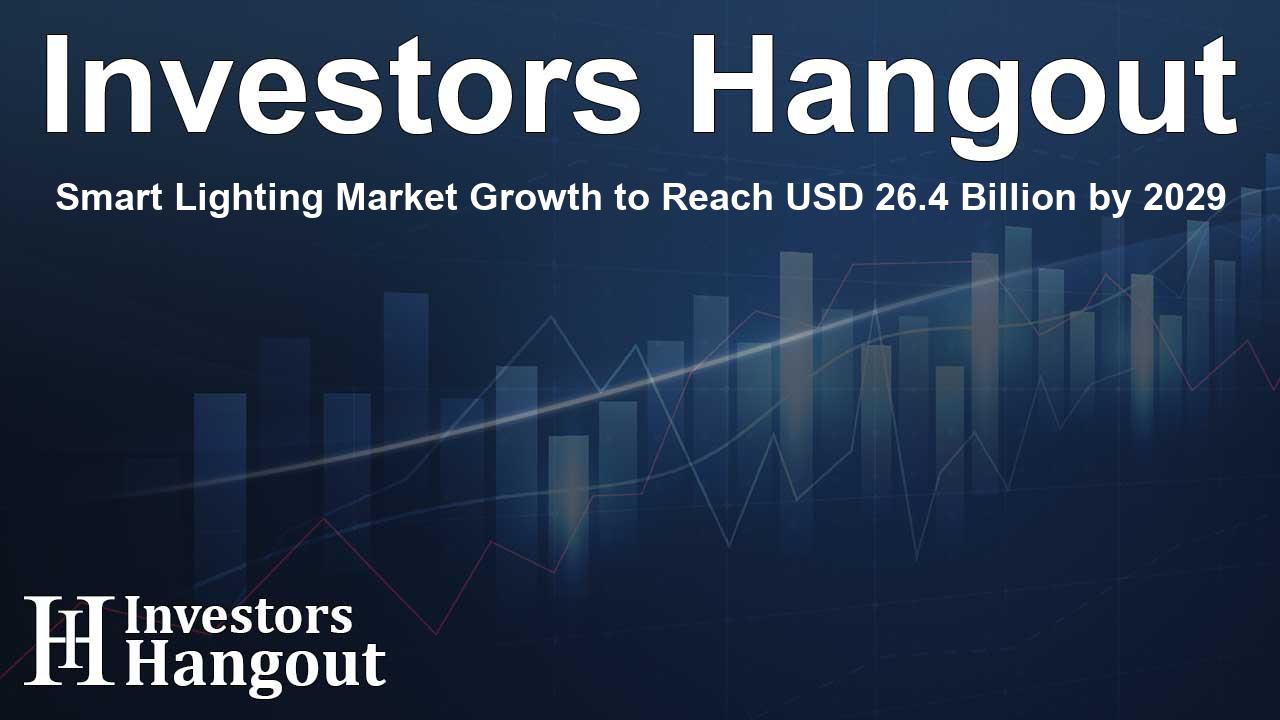Smart Lighting Market Growth to Reach USD 26.4 Billion by 2029

Understanding the Smart Lighting Market Growth
The smart lighting sector is poised for remarkable expansion, with expectations to flourish by USD 26.4 billion between 2025 and 2029. This impressive growth is anticipated to occur at a compound annual growth rate (CAGR) nearing 18.5%. The highly fragmented nature of the market highlights the need for vendors to form strategic partnerships with players in automotive, industrial, and commercial circles to maintain a competitive edge.
Key Players in the Smart Lighting Landscape
A variety of companies are influencing the smart lighting market. Notable names include Acuity Brands Inc., Current Lighting Solutions LLC, Dialight PLC, Eaton Corp., Helvar Merca Oy Ab, and Honeywell International Inc. Additionally, companies like Hubbell Inc., Ideal Industries Inc., and Lutron Electronics Co. Inc. are making significant contributions.
Growth Opportunities and Market Drivers
The smart lighting industry is being propelled forward by several key factors. Efficiency in energy consumption and the longevity of lighting systems are fundamental drivers. Technologies such as LED and mercury vapor lamps are at the forefront of modern lighting solutions, providing far superior energy savings and extended lifespans compared to traditional options. Moreover, the rise of sensors and smart controls lends itself to increased productivity and considerable cost savings. Users enjoy enhanced flexibility and comfort with features like dimmability and remote controls.
The digital transformation, coupled with the Internet of Things (IoT) revolution, is further invigorating the market as connectivity facilitates the remote management and monitoring of lighting setups. Meanwhile, the growing adoption of renewable energy sources alongside government initiatives promoting energy efficiency are also major contributors to the smart lighting market's promising future.
Challenges Faced by the Smart Lighting Market
Despite the various growth opportunities, the smart lighting market encounters several challenges. Notably, technological difficulties in integrating diverse systems and devices serve as a primary roadblock. Compatibility hurdles arise between different brands and protocols, preventing seamless functionality. Furthermore, initial investment costs can be high, and ongoing updates and maintenance often create additional obstacles. Nevertheless, the advantages of energy conservation, enhanced user comfort, and improved safety measures signal that the market is ripe for innovation and substantial growth ahead.
Segment Analysis of the Smart Lighting Market
The smart lighting market covers multiple segments by application, including commercial, residential, and public infrastructure, as well as other uses. Components of the market include hardware, software, and various services, all falling under specific geographical categories.
In commercial sectors, the adoption of smart lighting technologies is significantly increasing as businesses recognize the dual benefits of energy efficiency and cost-effectiveness. Companies are utilizing smart systems to automate their lighting, using sensors to monitor occupancy and adjust lighting levels dynamically, ultimately leading to significant energy savings.
Key Insights from the Smart Lighting Market Report
- Projected market growth at a CAGR of 18.5% during the forecast period.
- Insights into factors predicted to underpin growth in the smart lighting market.
- Market size estimations and their contributions to overarching market trends.
- Predicted shifts in consumer behavior and industry trends.
- Regional insights across several significant markets, including Europe and North America.
- A thorough analysis of competitive environments and vendor strategies.
- Detailed challenges anticipated for vendors in the marketplace.
Frequently Asked Questions
What is spurring the growth of the smart lighting market?
The significant growth of the smart lighting market can be attributed to advancements in technology, energy efficiency, and the adoption of renewable energy sources.
Who are the key players in the smart lighting market?
Major players include Acuity Brands Inc., Eaton Corp., Honeywell International Inc., and Lutron Electronics Co. Inc.
What are the primary challenges faced by the smart lighting market?
Challenges include integration difficulties across varied systems, compatibility issues between brands, and high initial investment costs.
How does smart lighting improve energy efficiency?
Smart lighting systems utilize sensors and controls to optimize usage, adjusting light levels based on occupancy and time of day, thus conserving energy.
What regions are most significant in the smart lighting market?
Key regions include Europe and North America, as they are leading markets for smart lighting solutions due to high demand for energy-efficient technologies.
About The Author
Contact Henry Turner privately here. Or send an email with ATTN: Henry Turner as the subject to contact@investorshangout.com.
About Investors Hangout
Investors Hangout is a leading online stock forum for financial discussion and learning, offering a wide range of free tools and resources. It draws in traders of all levels, who exchange market knowledge, investigate trading tactics, and keep an eye on industry developments in real time. Featuring financial articles, stock message boards, quotes, charts, company profiles, and live news updates. Through cooperative learning and a wealth of informational resources, it helps users from novices creating their first portfolios to experts honing their techniques. Join Investors Hangout today: https://investorshangout.com/
The content of this article is based on factual, publicly available information and does not represent legal, financial, or investment advice. Investors Hangout does not offer financial advice, and the author is not a licensed financial advisor. Consult a qualified advisor before making any financial or investment decisions based on this article. This article should not be considered advice to purchase, sell, or hold any securities or other investments. If any of the material provided here is inaccurate, please contact us for corrections.
